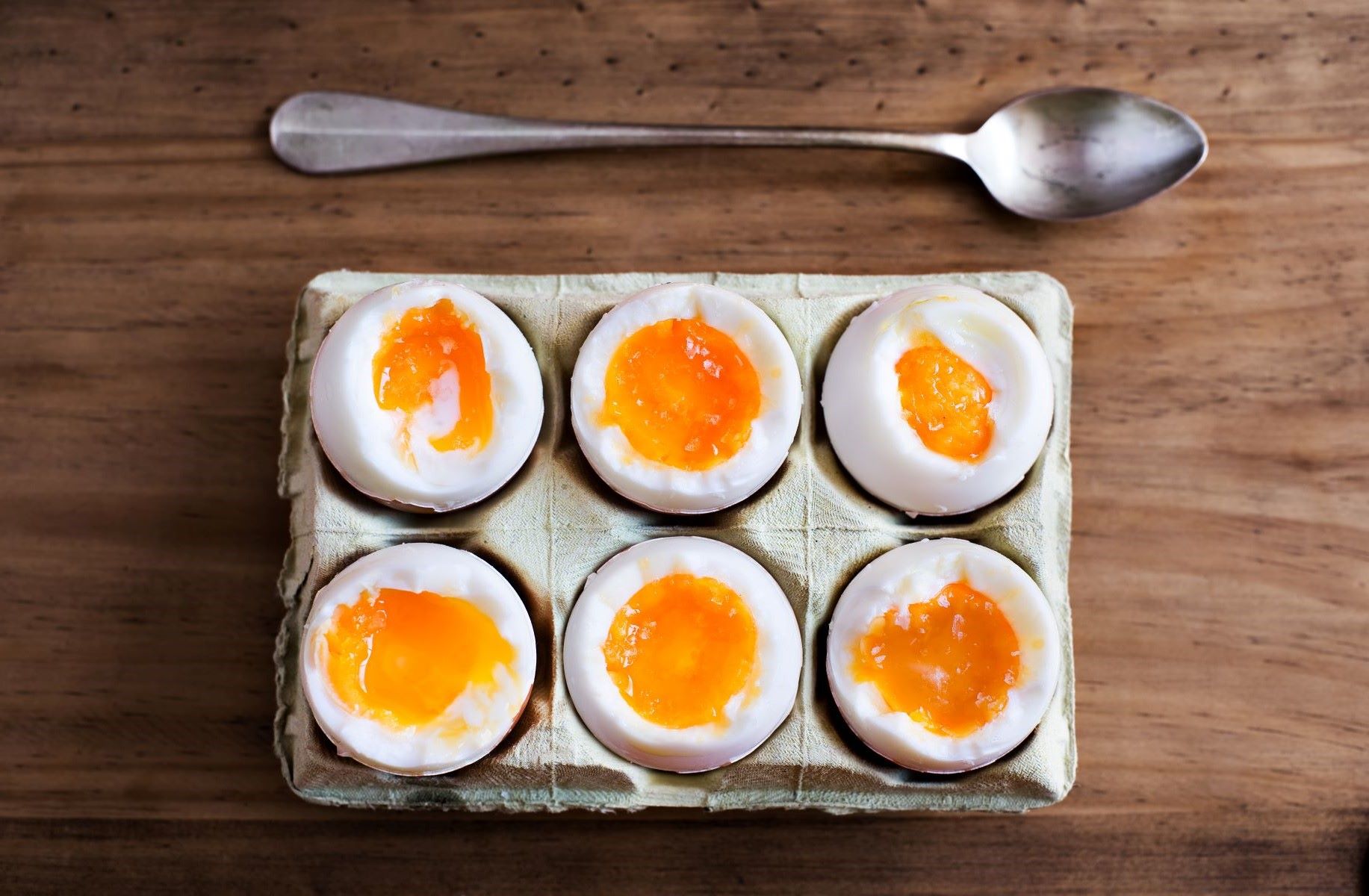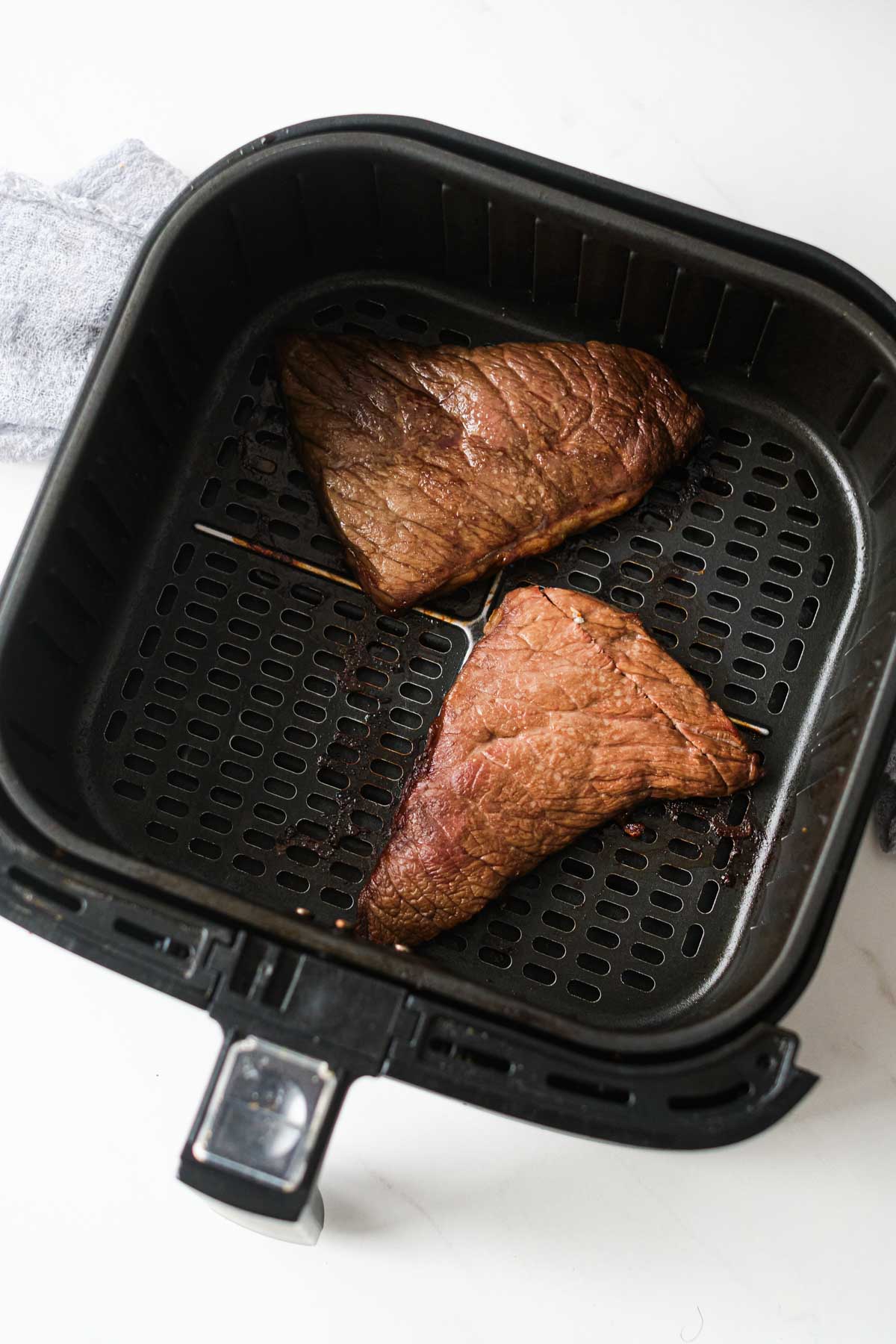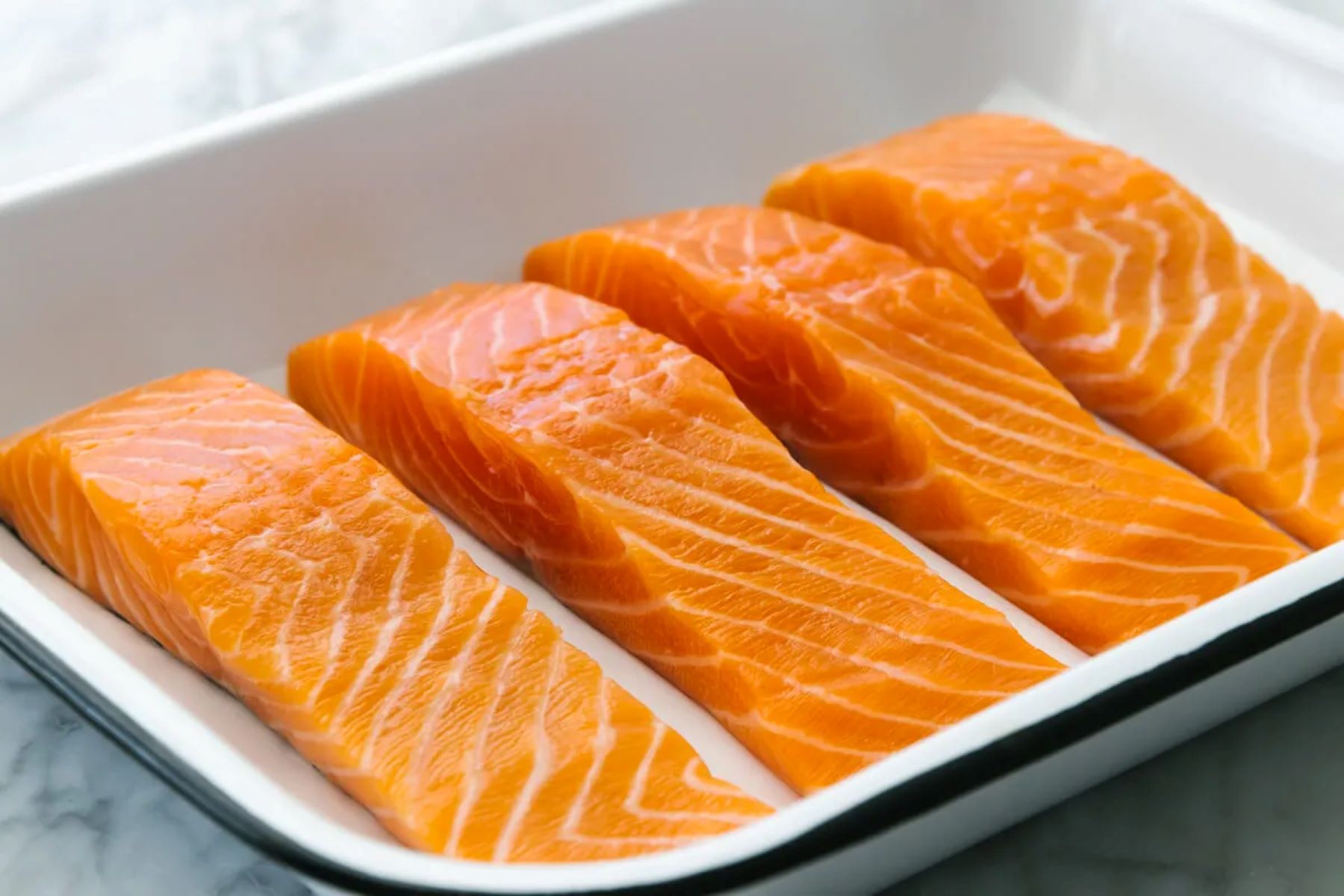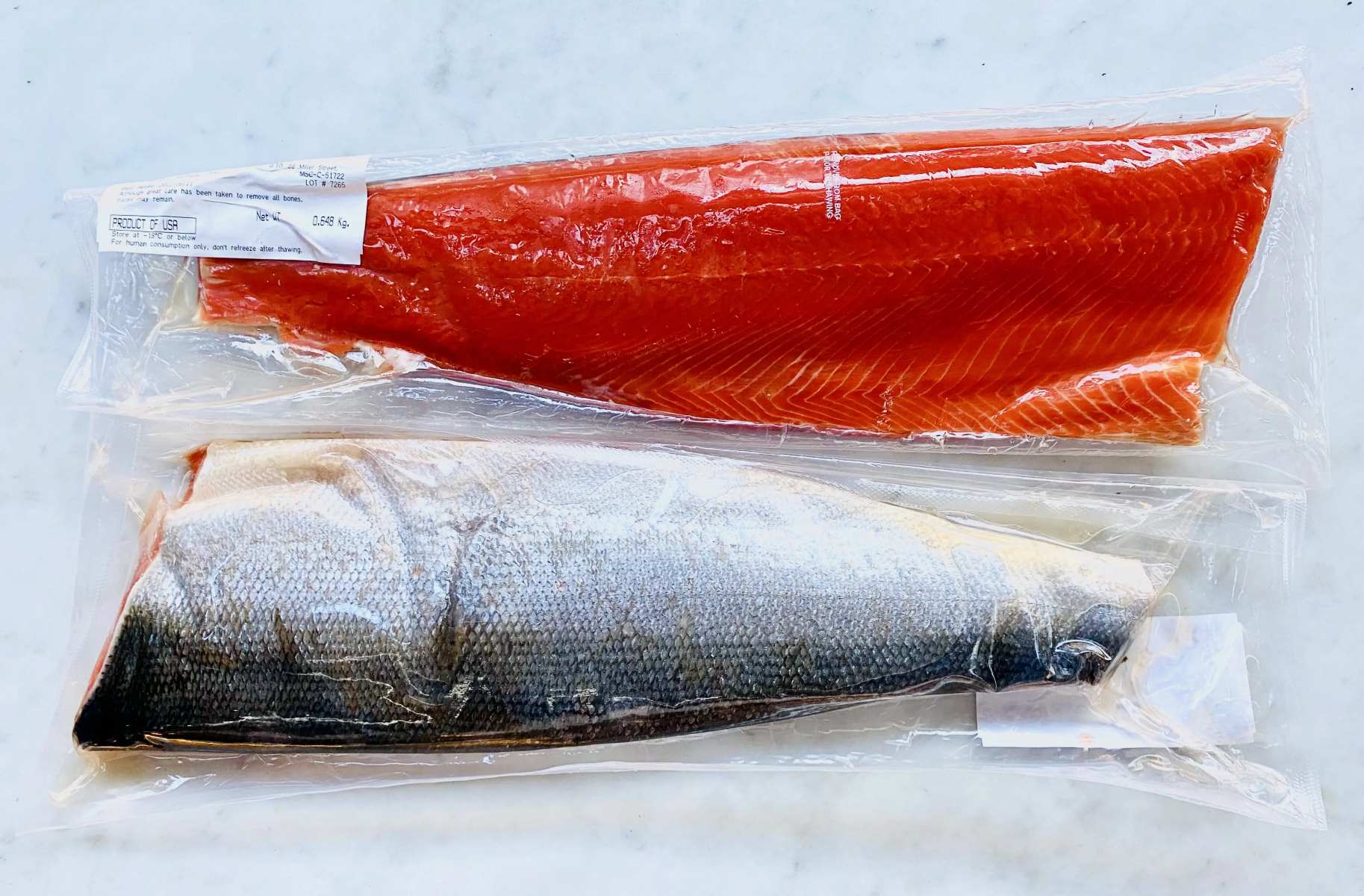Home>Food and Cooking>How To Reheat Salmon
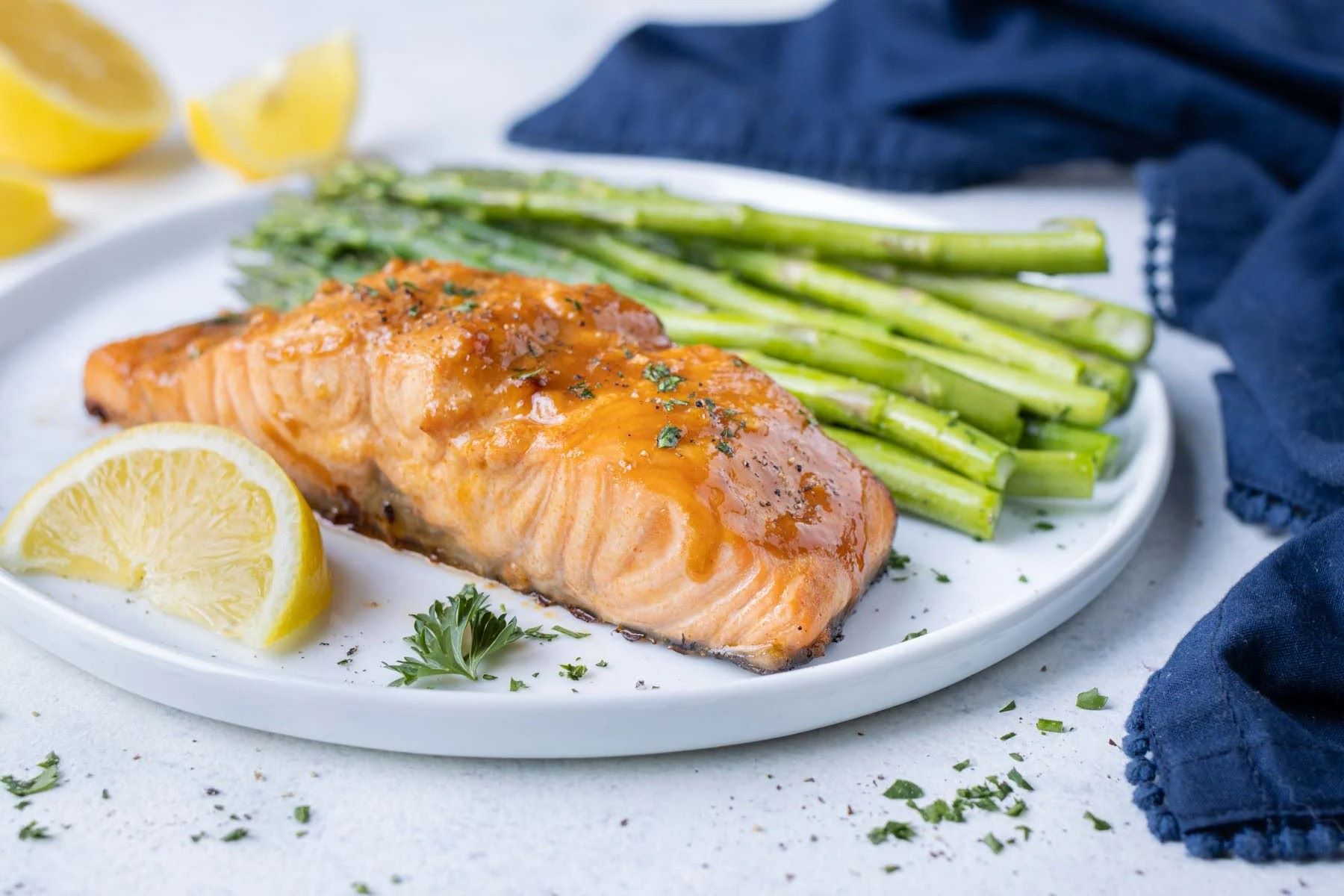

Food and Cooking
How To Reheat Salmon
Published: March 6, 2024
Learn the best methods for reheating salmon to preserve its flavor and texture. Discover expert tips and techniques for food and cooking enthusiasts.
(Many of the links in this article redirect to a specific reviewed product. Your purchase of these products through affiliate links helps to generate commission for Regretless.com, at no extra cost. Learn more)
Table of Contents
Introduction
Reheating salmon can be a delicate task, as it requires preserving the fish's tender texture and delicious flavor. Whether you have leftover salmon from last night's dinner or you simply want to enjoy this delectable fish again, knowing the best methods for reheating it is essential. By employing the right techniques, you can savor the succulent taste and delicate texture of reheated salmon, ensuring that it remains as delightful as when it was first served.
Salmon, known for its rich, buttery flesh and high omega-3 content, is a popular choice for seafood enthusiasts. Its versatility allows for various cooking methods, including grilling, baking, and pan-searing. However, when it comes to reheating salmon, special care must be taken to maintain its moistness and prevent it from becoming dry or overcooked.
In this comprehensive guide, we will explore three effective methods for reheating salmon: using the oven, microwave, and stovetop. Each method offers distinct advantages, and understanding the nuances of each approach will empower you to make an informed decision based on your preferences and available resources. Additionally, we will share valuable tips to ensure that your reheated salmon retains its exquisite taste and texture.
Whether you are a culinary enthusiast seeking to elevate your leftover salmon or a busy individual looking for a quick and convenient way to enjoy this nutritious fish, mastering the art of reheating salmon will undoubtedly enhance your dining experience. So, let's delve into the methods and tips that will enable you to savor the delightful flavors of reheated salmon with confidence and satisfaction.
Read more: How To Reheat Lasagna
Method 1: Reheating in the Oven
Reheating salmon in the oven is a popular method that allows for even heating and helps to maintain the fish's moisture and delicate texture. This approach is ideal for those who prioritize preserving the original quality of the salmon while bringing it back to a warm, enjoyable temperature.
To begin, preheat the oven to 275°F (135°C). While the oven is heating, take the leftover salmon out of the refrigerator and allow it to sit at room temperature for about 10-15 minutes. This step helps to minimize the temperature difference between the salmon and the oven, promoting more even reheating.
Next, prepare a baking dish by lightly greasing it with olive oil or lining it with parchment paper. Place the salmon in the dish, ensuring that the pieces are arranged in a single layer to facilitate uniform reheating. If desired, you can add a drizzle of olive oil or a splash of broth to the salmon to help maintain its moisture during reheating.
Once the oven reaches the desired temperature, carefully place the baking dish with the salmon inside. Allow the salmon to reheat for approximately 15-20 minutes, depending on its thickness. It's crucial to monitor the reheating process closely to prevent overcooking, as salmon can dry out quickly if exposed to high heat for an extended period.
After the designated time has elapsed, use a food thermometer to check the internal temperature of the salmon. The fish should reach an internal temperature of 145°F (63°C) to ensure that it is thoroughly reheated and safe to consume. If the salmon has reached the desired temperature, carefully remove it from the oven and let it rest for a few minutes before serving.
Reheating salmon in the oven offers the advantage of gentle, consistent heating, which helps to maintain the fish's tenderness and succulent flavor. By following these steps and exercising attentiveness during the reheating process, you can enjoy delicious, perfectly reheated salmon that rivals its freshly cooked counterpart.
Whether you are revitalizing last night's dinner or simply craving the delightful taste of salmon, reheating it in the oven is a reliable method that delivers satisfying results. With the salmon now warmed to perfection, you are ready to savor its exquisite flavor and tender texture, ensuring a delightful dining experience.
Method 2: Reheating in the Microwave
Reheating salmon in the microwave offers a convenient and time-efficient method for enjoying this delectable fish. While it may not provide the same level of gentle, uniform heating as the oven, the microwave can still yield satisfactory results when used correctly.
To begin, place the leftover salmon on a microwave-safe dish, ensuring that the pieces are arranged in a single layer. This arrangement promotes even reheating and helps to prevent the fish from becoming overcooked in certain spots while remaining cold in others.
Cover the dish with a microwave-safe lid or microwave-safe plastic wrap, leaving a small vent to allow steam to escape. This step helps to create a controlled environment for reheating the salmon, preventing excessive moisture loss and maintaining its tenderness.
Set the microwave to a medium power level, typically around 50-60% power, to gently reheat the salmon without subjecting it to high heat that can cause rapid drying. Reheat the salmon in intervals of 30-45 seconds, checking its temperature and texture after each interval.
During the reheating process, it's essential to monitor the salmon closely to prevent overcooking. Microwaves can vary in power, so adjusting the reheating time based on your microwave's wattage is crucial for achieving optimal results.
After each interval, use a food thermometer to check the internal temperature of the salmon. The fish should reach an internal temperature of 145°F (63°C) to ensure thorough reheating. Additionally, gently press the salmon with a fork to assess its texture, ensuring that it is heated through without becoming dry or rubbery.
Once the salmon reaches the desired temperature and texture, carefully remove it from the microwave. Let the salmon rest for a minute or two before serving, allowing the residual heat to distribute evenly throughout the fish.
Reheating salmon in the microwave provides a quick and efficient way to enjoy this nutritious and flavorful fish. By following these steps and exercising attentiveness during the reheating process, you can savor the delightful taste and tender texture of reheated salmon, ensuring a satisfying dining experience.
With the salmon now warmed to perfection, you are ready to indulge in its rich, buttery flavor and delicate texture, whether you are revitalizing leftovers or simply craving the delightful taste of salmon.
Method 3: Reheating on the Stovetop
Reheating salmon on the stovetop offers a versatile and flavorful approach that allows for precise control over the reheating process. This method is particularly appealing for those who appreciate the opportunity to infuse additional flavors into the salmon while ensuring even heating.
To begin, select a non-stick skillet or a stainless-steel pan that is large enough to accommodate the salmon pieces without overcrowding. Overcrowding the pan can hinder the even distribution of heat, potentially resulting in uneven reheating.
Place the skillet or pan on the stovetop over low to medium heat, depending on the thickness of the salmon. It's essential to use a gentle heat setting to prevent the salmon from becoming overcooked or drying out during the reheating process.
If desired, add a small amount of olive oil or butter to the skillet to create a flavorful base for reheating the salmon. This step not only enhances the taste of the fish but also helps to prevent it from sticking to the pan.
Once the skillet is heated and the oil or butter is shimmering, carefully place the salmon pieces in the pan, ensuring that they are arranged in a single layer. This arrangement promotes even heating and allows the salmon to absorb the aromatic flavors from the skillet.
Allow the salmon to reheat gently, flipping the pieces occasionally to ensure uniform heating. The reheating process typically takes 5-7 minutes, depending on the thickness of the salmon. It's crucial to monitor the salmon closely and adjust the heat as needed to prevent overcooking.
As the salmon reheats, you may choose to add additional seasonings or aromatics to the pan, such as fresh herbs, garlic, or a splash of citrus juice, to infuse the fish with delightful flavors. This step allows for customization based on your preferences and can elevate the overall dining experience.
After the salmon reaches the desired temperature and is thoroughly reheated, carefully remove it from the pan and transfer it to a serving dish. Let the salmon rest for a minute before serving, allowing the residual heat to distribute evenly throughout the fish.
Reheating salmon on the stovetop offers a delightful way to infuse the fish with additional flavors while ensuring even heating. By following these steps and exercising attentiveness during the reheating process, you can savor the rich, buttery flavor and tender texture of reheated salmon, creating a memorable dining experience.
With the salmon now warmed to perfection, you are ready to indulge in its exquisite taste, whether you are revitalizing leftovers or simply craving the delightful flavors of salmon.
Tips for Reheating Salmon
Reheating salmon to perfection involves more than just choosing the right method. Implementing a few essential tips can elevate the reheating process, ensuring that the fish retains its delicate texture and delectable flavor. Whether you are reheating leftover salmon or preparing a freshly cooked batch for future consumption, these tips will guide you toward a delightful dining experience.
-
Use Gentle Heat: Regardless of the reheating method you choose, it's crucial to apply gentle heat to prevent the salmon from becoming overcooked or dry. Whether using the oven, microwave, or stovetop, opting for lower heat settings and longer reheating times can help maintain the fish's moisture and tenderness.
-
Monitor the Temperature: Invest in a reliable food thermometer to accurately gauge the internal temperature of the reheated salmon. Aim for an internal temperature of 145°F (63°C) to ensure that the fish is thoroughly reheated and safe to consume. By monitoring the temperature, you can prevent overcooking and preserve the salmon's succulent texture.
-
Allow for Resting Time: After reheating the salmon, allow it to rest for a few minutes before serving. This resting period enables the residual heat to distribute evenly throughout the fish, ensuring that it remains tender and flavorful. Additionally, resting the salmon can help to lock in its natural juices, enhancing its overall succulence.
-
Minimize Exposure to High Heat: When reheating salmon, it's essential to minimize its exposure to high heat, as prolonged or intense heat can cause the fish to dry out quickly. By employing gentle reheating methods and closely monitoring the process, you can prevent the salmon from becoming tough or rubbery.
-
Add Moisture if Needed: If you anticipate that the salmon may become dry during the reheating process, consider adding a drizzle of olive oil, a splash of broth, or a pat of butter to help maintain its moisture. This simple step can contribute to a more luscious and enjoyable dining experience.
-
Customize with Flavors: Embrace the opportunity to customize the reheating process by infusing the salmon with additional flavors. Whether adding fresh herbs, a squeeze of citrus juice, or a sprinkle of seasoning, incorporating aromatic elements can elevate the overall taste of the reheated salmon.
By incorporating these tips into your reheating routine, you can ensure that the salmon retains its exquisite taste and tender texture, delivering a dining experience that rivals its freshly cooked counterpart. Whether you are revitalizing leftovers or preparing a new batch of salmon, these tips will empower you to savor the rich, buttery flavor and delicate texture of reheated salmon with confidence and satisfaction.
Read more: How To Reheat A Burrito
Conclusion
In conclusion, mastering the art of reheating salmon is a valuable skill that allows seafood enthusiasts to savor the rich, buttery flavor and delicate texture of this delectable fish beyond its initial serving. Throughout this comprehensive guide, we have explored three effective methods for reheating salmon: utilizing the oven, microwave, and stovetop. Each method offers distinct advantages, catering to various preferences and culinary needs.
Reheating salmon in the oven provides a gentle, consistent approach that helps maintain the fish's tenderness and succulent flavor. By preheating the oven, allowing the salmon to reach room temperature, and monitoring the internal temperature, individuals can enjoy perfectly reheated salmon that rivals its freshly cooked counterpart. This method is ideal for those who prioritize preserving the original quality of the salmon while bringing it back to a warm, enjoyable temperature.
The microwave offers a convenient and time-efficient method for reheating salmon, making it an attractive option for individuals seeking a quick and hassle-free approach. By utilizing lower power settings, monitoring the reheating process closely, and incorporating resting time, individuals can achieve satisfactory results, ensuring that the salmon retains its delightful taste and tender texture.
Reheating salmon on the stovetop presents a versatile and flavorful approach that allows for precise control over the reheating process. This method enables individuals to infuse additional flavors into the salmon while ensuring even heating, creating a memorable dining experience that caters to diverse culinary preferences.
In addition to exploring the reheating methods, we have shared valuable tips for reheating salmon to perfection. By using gentle heat, monitoring the temperature, allowing for resting time, minimizing exposure to high heat, adding moisture if needed, and customizing with flavors, individuals can elevate the reheating process, ensuring that the salmon retains its exquisite taste and tender texture.
Whether revitalizing leftovers from a previous meal or preparing a freshly cooked batch for future consumption, mastering the art of reheating salmon empowers individuals to enjoy this nutritious and flavorful fish with confidence and satisfaction. By implementing the techniques and tips outlined in this guide, individuals can savor the delightful flavors of reheated salmon, creating a dining experience that rivals its freshly cooked counterpart.
In essence, the ability to reheat salmon with precision and care ensures that this beloved seafood delicacy continues to delight the palate, offering a culinary experience that transcends the initial serving. With the knowledge and techniques acquired from this guide, individuals can confidently navigate the reheating process, unlocking the full potential of salmon's exquisite taste and tender texture.

